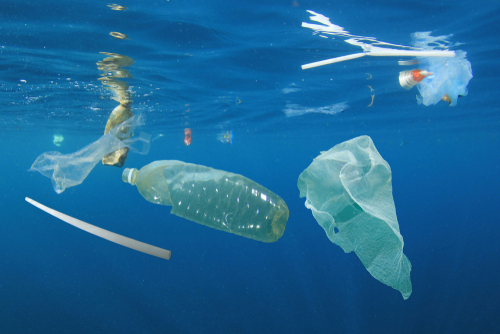Microplastics – Too Small to See but Hugely Harmful to the Environment
By Alex Mardikian
Plastics are ubiquitous. They are everywhere. A quick look around will inform us that nearly everything we use contains plastic – chairs, pens, brushes, headphones, tables, plates, clothes, bottles, caps…the list is endless. These don’t degrade fully, and after its useful life is over, plastic often ends up in the ocean. Each year, 12 million tons of plastic gets dumped into the oceans.
Microplastics are major environmental polluters but escape scrutiny because they are not visible to the naked eye. Plastic pollution is a big threat to global marine ecosystems. Microplastics are beginning to garner attention and are sending the alarm bells ringing.
The World Economic Forum warns that in another 30 years, there will be more plastic than fish in the world’s oceans. Microplastics are small, but they cause immense pollution. Microbeads and microfibers of length in the range 0.5 – 5mm length constitute microplastics. They are present in personal care products such as toothpaste and body scrubs. They’ve been used in garments for longer than that.
Research shows that a single cycle of washing in the washing machine loosens and releases around 700,000 particles of microplastics into the atmosphere. Acrylic is by far the biggest culprit, releasing 1.5 times as many fibers as polyester. These synthetic particles find their way into everything, including our lungs through the air we breathe and our intestines, because of the food we eat. Fish, such as perch, consume these microfibers, and in turn are eaten by pike. Both species are beginning to die before reaching the reproductive stage. When we consume such meat, the effect on our health is anything but good.
We can get an idea of how serious the issue with microfibers is when we consider the fact that 85% of the human-generated debris on shorelines consists of microfibers. Some percentage of microfibers gets trapped in sewage treatment plants but a huge amount escapes to pollute our riverways and ultimately end up in the oceans. A single washing of a fleece jacket releases nearly 1.7g of microfibers into the environment. We’ve already reached a stage where microplastic is now found in tap water. Every time we drink water, we ingest plastic.
We know that plastics, for all practical purposes, never degrade. Microplastic that enters our oceans is likely to remain an ever-present flotsam that will slowly alter life in the ocean, and indeed on the planet…and it will not be for the better. Changes in the feeding patterns of fish, crabs, and mollusks are ominous portents about a change, which if not halted, could become irreversible. Researchers now feel that the current estimates of 165 million tons of plastic in the ocean are a serious underestimate, and there may be more lurking beneath the surface. Governments are waking up to the issue. Both the U.S and U.K have banned microbeads. But we need to do a lot more.
With respect to microplastics, Hawaii is one of the most affected regions on earth. Ocean currents regularly dump plastic waste on Hawaii’s beaches; and this waste originates from places far away, including Russia and Japan. Kamilo Beach is just one of the beaches that is badly affected by what the oceans are increasingly beginning to return to land – garbage that should not have entered the oceans in the first place.
Today, China, not long back the world’s dumping ground, has closed its doors to garbage. Countries are suddenly left searching for solutions. And that’s a good thing. We need to come up with answers for what can be done to ease these pressures off Earth. Can we live in a plastic-free world? Indeed, we can.
As responsible residents of Hawaii, we can contribute a lot by avoiding single-use plastic items. We must specifically choose body-care products that don’t have microbeads. Shifting to cotton, natural fibers for clothing will be a big help. And, we must be careful in disposing garbage – segregate recyclable items from non-recyclable ones, and keep dry trash separate from wet trash.

